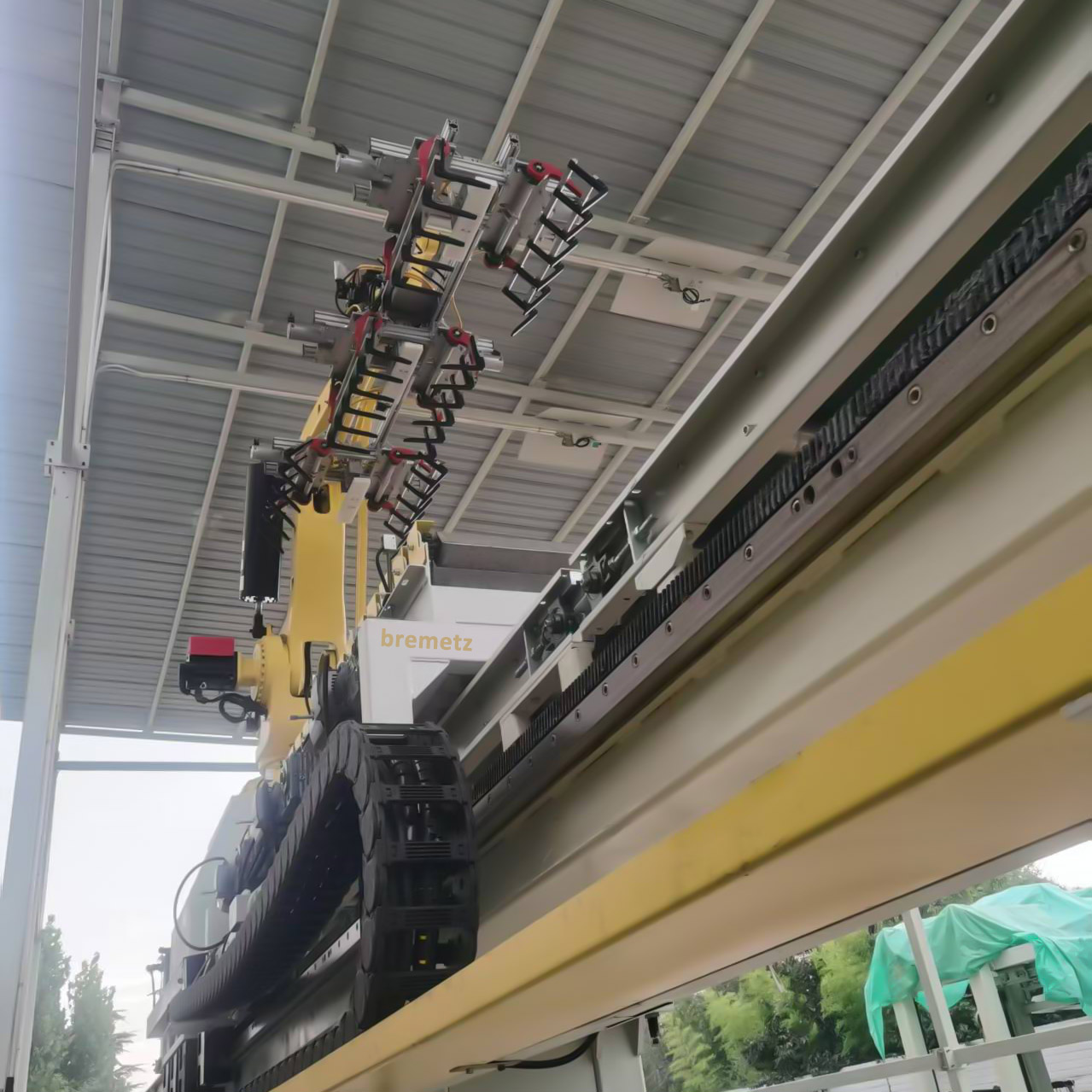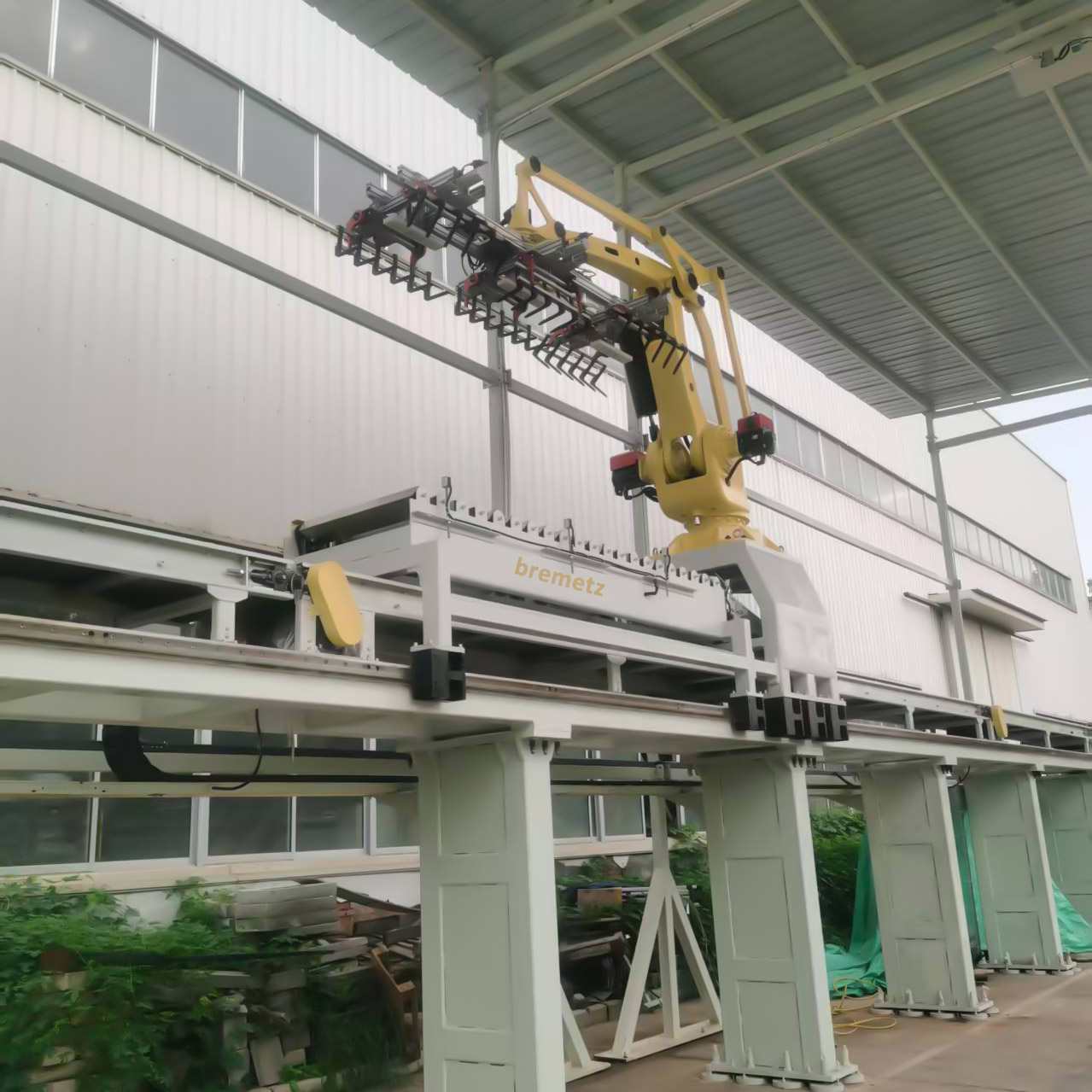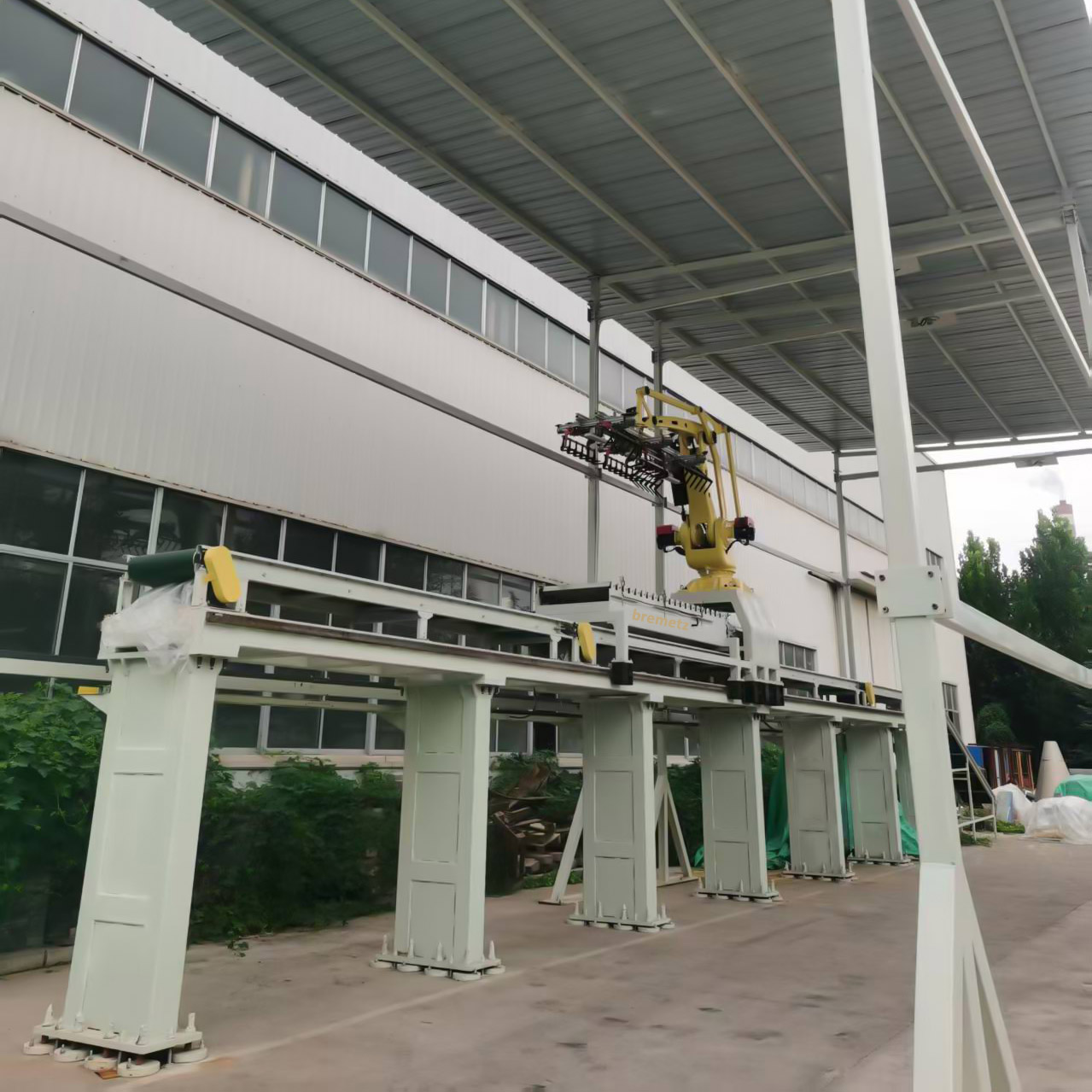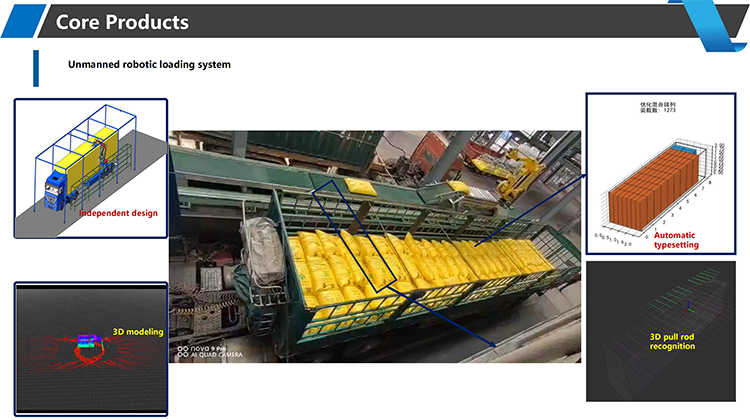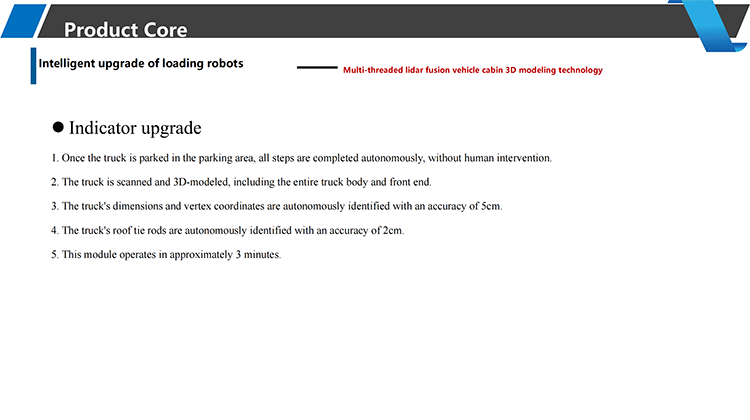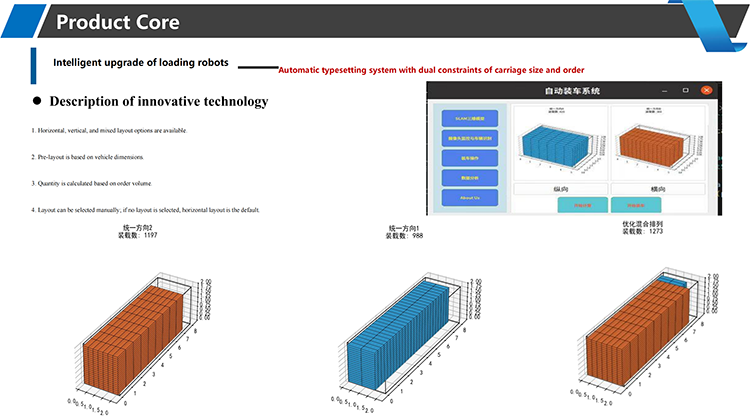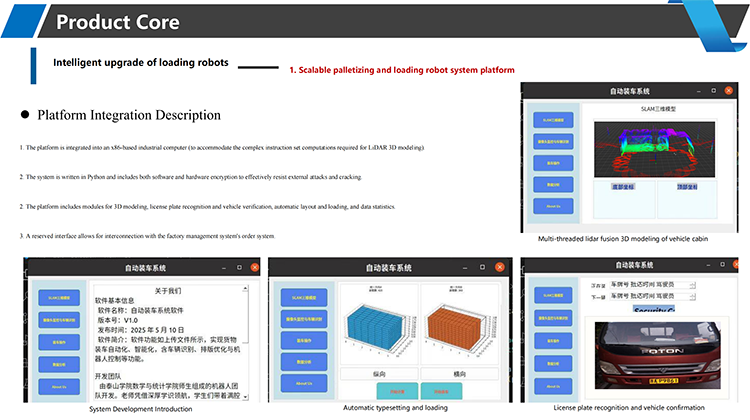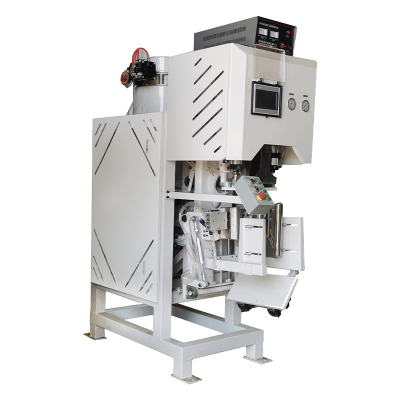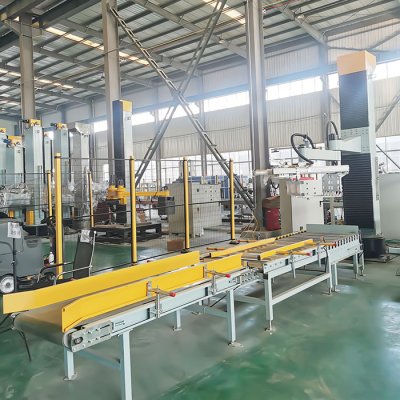Truck bag loader for resin, o-phenylphenol
I. Typical application scenarios of Truck bag loader
II. Chemical and food industry
Bag loading: bremetz's robot can grab 1-4 bags at a time, support pallet-free operation, and reduce logistics costs.
III. Sodium carbonate bag loading robot: supports 20kg/50kg bag material loading, uses laser scanning and AI planning, is compatible with multiple models, and improves efficiency by 300%.
IV. Specially used for stacking and loading light bagged materials such as flour bags.
V. Specially used for feeding bag loading
VI. Specially used for urea bag loading, grabs 3 bags at a time, and loads efficiently.
VII. Suitable for various truck models.
VIII. Applicable Industries and Products:
1. Inorganic Chemical Raw Materials: Elements, industrial gases, inorganic alkalis, inorganic acids, inorganic salts, oxides, non-metallic minerals, and other unclassified inorganic chemical raw materials.
2. Chemical Minerals: Sulfur ore, potash ore, phosphate ore, boron ore, and other chemical minerals.
3. Organic Chemical Raw Materials: Alkanes and their derivatives, alkenes and their derivatives, alkynes and their derivatives.
Alcohols, acids, aldehydes, ketones, lipids, ethers, sulfones, and amines.
Carbohydrates, carboxylic acids and their derivatives, quinones, aromatic hydrocarbons and their derivatives, and acid anhydrides.
Organic intermediates, heterocyclic compounds, nitro compounds, halides, and other unclassified organic chemical raw materials.
4. Plastic Raw Materials:
(1) General-purpose Plastics: Polyethylene (PE), Polypropylene (PP), Polyvinyl Chloride (PVC), Polystyrene (PS), and ABS. (2) Engineering Plastics: Polyphenylene ether, polyphenylene sulfide, polyoxymethylene, polyetherimide, polycarbonate, polycarbonate polymer, polyamide, polyester resin, thermoplastic elastomer, recycled masterbatch, other unclassified plastic raw materials.
5. Rubber Raw Materials:
(1) Natural Rubber: General-purpose: Granular rubber, smoked sheet rubber, air-dried sheet rubber, crepe rubber.
Specialty: Constant tack rubber, oil-extended rubber, low tack rubber, clear rubber, easy-to-handle rubber, carbon black co-precipitated rubber, purified rubber, clay co-precipitated rubber, tire rubber, granular rubber.
Modified: Difficult-to-crystallize rubber, epoxidized rubber, chlorinated rubber, grafted rubber, liquid rubber, hydrochlorinated rubber, cyclized rubber.
Other plant-derived rubbers: Ginkgo biloba rubber, Eucommia ulmoides rubber.
(2) Synthetic Rubber: Styrene-butadiene rubber, butadiene rubber, butylene rubber, ethylene propylene rubber, reclaimed rubber, rubber auxiliaries, butyl rubber, chloroprene rubber, isoprene rubber (SBS), other unclassified rubber raw materials. 6. Resins: Natural resins, epoxy resins, phenolic resins, acrylic resins, unsaturated polyester resins, ion exchange resins, amino resins, organosilicon resins, and other unclassified resins.
7. Intermediates
8. Petroleum and Petroleum Products: Crude oil, fuel oil, lubricating greases, solvent oils, petroleum coke, paraffin wax, asphalt, refined oil products, petroleum products, oil additives, and gaseous petroleum products.
9. Chemical Additives: Coating additives, water treatment chemicals, information technology chemicals, electronics industry additives, and papermaking additives.
(1) Rubber Additives: Antioxidants, vulcanizing agents, accelerators, scorching inhibitors, dispersants, and other rubber additives. (2) Plastic additives: flame retardants, heat stabilizers, light stabilizers, antioxidants, colorants, fluorescent whitening agents, foaming agents, crosslinking agents, coupling agents, antistatic agents, lubricants, release agents, anti-dripping agents, mildew inhibitors, curing agents and curing accelerators, plasticizers, leather auxiliaries, textile and printing and dyeing auxiliaries, adsorbents, surfactants, emulsifiers, foaming agents, metal processing auxiliaries.
10. Food additives: acidity regulators, antioxidants, bleaching agents, colorants, anti-caking agents, defoamers, color protectants, enzyme preparations, emulsifiers, leavening agents, flavor enhancers, preservatives, sweeteners, thickeners, moisture retainers, nutritional fortifiers, other unclassified food additives.
11. Feed additives: nutritional additives, non-nutritive additives, amino acids, minerals, vitamins, antibiotics, antimicrobials, enzyme preparations, antioxidants, mildew inhibitors, other unclassified feed additives. 12. Chemical Reagents: Ethanol, Acetone, Potassium Permanganate.
13. Catalysts: Specialized catalysts, catalyst supports, other unclassified catalysts.
14. Glass: Deep-processed glass, ordinary glass, architectural glass, specialty glass, other unclassified glass.
15. Inks
16. Fertilizers: Ammonia fertilizer, potash fertilizer, phosphate fertilizer, compound fertilizer, bio-fertilizer, micronutrient fertilizer, bacterial fertilizer, plant growth regulators, other unclassified fertilizers.
17. Biochemicals: Ceramics, laboratory supplies, pyrotechnic products, other polymers.
18. Plastic Products: Plastic films, sheets, sections, rods, pipes, profiles, plastic containers, automotive plastics, electronic plastics, industrial and agricultural plastic products.
19. Plastic Building Materials: Plastic handicrafts, household plastic products, plastic packaging supplies, other unclassified plastic products.
20. Rubber Products:
21. Polyurethane: Polyurethane raw materials, PU products, other unclassified polyurethane.
22. Adhesives: Inorganic adhesives, natural adhesives, synthetic adhesives, polyvinyl alcohol and polyvinyl acetate adhesives, polyurethane adhesives, hot melt adhesives, resin adhesives and acrylic adhesives, inorganic adhesives, rubber adhesives, phenolic, urea-formaldehyde, melamine adhesives, and other unclassified adhesives.
23. Chemical fibers: chips, polyester, nylon, acrylic, spandex, polypropylene, vinylon; acetate fiber, viscose fiber, polyester fiber, functional fiber, man-made fiber, and other unclassified chemical fibers.
24. Dyes: Direct dyes, disperse dyes, reactive dyes, acid dyes, cationic dyes, fiber dyes, leather dyes, pigment printing pastes, dyes for film, and other unclassified dyes.
25. Paints:
(1) Architectural paints: Interior wall latex paint, fire retardant paint, waterproof paint, real stone paint, exterior wall latex paint, mildew-proof paint, floor paint, elastic paint, and wood paint. (2) Wood Coatings: Water-based wood coatings, furniture coatings, floor coatings, polyester coatings.
(3) Automotive Coatings: Primers, intermediate coats, topcoats, clear coats, repair coatings.
(4) Marine Coatings: Hull paints, cabin paints, bottom antifouling paints, bottom anti-rust paints.
(5) General-Purpose Coatings: Mixed paints, varnishes, light industrial coatings, industrial coatings, rubber paints, enamel paints, road coatings, road marking paints.
(6) Coating Raw Materials: Titanium dioxide, stone powder, aluminum silver paste, lithopone, defoamers, wetting agents, curing agents, pearlescent powder, leveling agents, dispersants.
26. Pigments: Inorganic pigments, organic pigments, other unclassified pigments.
The following is an introduction to the truck bagging machine produced by bremetz
I. Core structure and working principle
1. Multi-stage telescopic arm design
Truck bag loading and unloading machines usually adopt a multi-stage telescopic arm structure (such as a four-section telescopic arm), which can achieve a wide range of telescopic movement through hydraulic drive and wire rope linkage. The robotic arm consists of the first to fourth telescopic arms, which are driven by hydraulic cylinders. The telescopic stroke can reach 3 times that of the hydraulic cylinder, covering a large area of the truck compartment.
Drive mode: The hydraulic system is combined with PLC control to ensure the accuracy and stability of the movement.
Sensor configuration: Magnetic scale sensor, rising/falling position sensor monitors the telescopic position in real time to prevent over-limit collision.
2. End effector adaptability
Clamp type: including vacuum suction cups, clamping claws, etc., which can adapt to different materials such as bagged flour, ton bags (such as mortar, chemical raw materials).
Flexible gripping technology: Some robotic arms are equipped with pressure sensors and visual systems, which can automatically adjust the clamping force to deal with packaging deformation or damage.
PLC and AI integration: PLC controls the robot arm motion process and combines AI algorithm to optimize path planning. The loading manipulator produced by bremetz uses laser scanning and 3D reconstruction technology to adjust the stacking path in real time to meet the needs of different vehicle models.
Multimodal positioning: Integrating laser SLAM, visual odometer and other technologies, the positioning accuracy reaches ±5mm, which can adapt to complex environments.
II. Technical advantages and innovations
1. Efficient automation
Replacing manual handling, a single machine can handle 600-800 bagging cycles per hour, and the efficiency is increased by more than 3 times.
Support continuous operation, for example, the container bag robot can achieve 7×24 hours operation with a failure rate of less than 0.5%.
2. Multi-scenario adaptability
Vehicle type adaptation: The intelligent scanning system is compatible with high-rail vehicles, flatbed vehicles and other models, and the stacking strategy is automatically adjusted.
Material diversity: It can handle a variety of specifications such as bagged cement, lime, gypsum (25-50kg), ton bags (0.5-2.5 tons), and the load range is from 50kg to 1.5 tons.
3. Safety and stability
The anti-sway control system and collision sensor avoid shaking during operation and ensure that the materials are stacked stably.
The explosion-proof design (such as ATEX certification) is suitable for hazardous environments such as chemical industry.
III. Typical application scenarios
1. Building materials industry
Bagged cement/mortar/lime/gypsum/putty powder: Through the robot arm to grab and stack, solve the problems of low efficiency of manual loading and dust hazards. The bagged cement robot adopts multi-axis linkage control to achieve high-speed and accurate loading.
2. Chemical and food industry
Bag loading: bremetz's robot can grab 1-4 bags at a time, support pallet-free operation, and reduce logistics costs.
3. Sodium carbonate bag loading robot: supports 20kg/50kg bag material loading, uses laser scanning and AI planning, is compatible with multiple models, and improves efficiency by 300%.
4. Specially used for stacking and loading light bagged materials such as flour bags.
5. Specially used for feeding bag loading
6. Specially used for urea bag loading, grabs 3 bags at a time, and loads efficiently.

